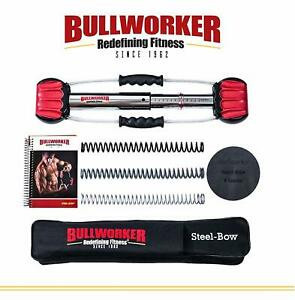THE ESSENTIAL DIFFERENCES
Isometric exercises are strength exercises where your muscles contract while held in a still position. The angle of your joints and the length of the muscle being worked do not change. The muscles or muscle groups are tightened. The only change is when more weight might be used in the exercise. The plank is a well known example of an isometric exercise.
Isotonic exercises are those that involve your muscles either shortening or lengthening. There is a range of motion. These are common exercises, like presses, curls, pulls, squats – when you lift something, push something or lower something. That “something” may be your own body or parts thereof.
In this post, I will focus more on isometrics than on isotonics, since isotonics are very commonly known. Isotonic exercises are those done in any gym on any day.
I don’t want to suggest that one mode of exercise is better than the other, only to point out what they are and how they differ.

The image above shows the basic plank, one of the very best isometric exercises available.
I have done planks often and still do. I have also suspended myself upside down on my inversion table for about a minute or more.
Isotonic exercises are more commonly known and used. I have done all of the known isotonic movements that move my joints. I have also added isometric holds at the end of an isotonic movement, to add intensity.
BENEFITS OF ISOMETRICS
Mayo Clinic gives us this information about isometrics:
- They can help to stabilize our core and joints
- Isometrics can help us maintain strength as we recover from an injury
- Isometrics can build strength
- They can help maintain strength in an area of arthritis (when isotonics are too painful)
- Isometric exercise may help to lower blood pressure
- They can increase bone density
- Isometrics are usually much gentler on the body part being worked
- Isometric exercises increase the time your muscles are under tension
- They may be better for aging people who want to maintain strength, not necessarily build more
- Minimal movement means less time expended on the workout
THE NEGATIVES
- Isometrics will not build speed or athletic performance.
- They only create strength in the position being held
Below is a picture of gymnastic superstar Simone Biles, as she performs an isometric movement known as the L- Sit.

Simone is holding her legs out front without moving them for 3 sets of 30 seconds. This stresses her core and thighs. Here is more information on Simone Biles.
Some other isometric exercises include:
- Pull up or chin up holds at top
- Push up holds
- Handstands against a wall
- Squat holds
- Hanging straight leg holds
- Lateral arm raise holds
- Glute bridge holds
Actually, we can halt and hold the movement of any isotonic exercise and produce an isometric effect at any time as we raise or lower resistance weights or our bodyweight. It makes more sense to me to add this further intensity at the end point.
BULLWORKER
Bullworker Fitness has been around since 1962. They have created home workout products that combine isometrics with isotonics. The Bullworker Steel bow is shown below.
The red handles may be pushed together in front of our chests to work our pectoral muscles intensely. The black handles may be pulled apart for many exercises – back, shoulders, biceps.
Note the different springs. They may be loaded to give us the amount of resistance appropriate for our level of strength or for the movement we select.
Workout manuals and a carrying case come with each delivery.
I have the Steel Bow and the Bow Classic, which is a larger version of the Steel Bow shown.
The Bow Classic is more appropriate for the legs and back exercises, since more range of motion is possible.

My practice is to first do isotonic reps with the Bullworkers and then finish with a lengthy hold. It is possible to do only isotonic reps or only holds. It makes more sense to me to do both in one set.
One of the better aspects of using Bullworkers is the portability they give us. I like to take my Steel Bow with me when I travel. It is only 20″ long, yet it can present a tough challenge as we add the heavier springs.
One more thing – Bullworker gives us a free membership to a Facebook group, where we can ask or answer questions and get the benefit of community support.
Take a look at this video. A very advanced bodybuilder is giving us his opinion of Bullworkers. He is very casual in his outlook, but he knows bodybuilding!
Learn more here about the entire Bullworker line. For any purchase, the code hat5 will give you a 5% discount.
AMAZON
I hardly ever leave Amazon out of any list of equipment relevant to my topic of the day. As an Amazon affiliate, I may point out appropriate options and even earn if qualifying purchases are made.
Here are a few Amazon selections that pertain to the subject matter.
FINAL THOUGHTS
Personally, I never thought much about isometrics until I discovered Bullworkers. Even then, I was more interested in the isotonic mode the Bullworkers provide.
But it is nice to complete a designated number of reps and then hold on for additional intensity. I think of this as similar to doing very slow negatives when curling barbells or dumbbells. An added benefit!
There may be some who would like to say isotonics are good and isometrics are bad – or vice versa. This reminds me of a time when Nautilus proponents would say free weights were not as good. Free weights people would say the opposite.
It’s all good! The only bad workout is the one that isn’t done.
Isometrics will become more important to me when I am older and want to preserve the strength that I will then have. Until then, isometric exercises give me an excellent adjunct to isotonics. But the Bullworkers give me both!
Please leave me any comments or questions in the “Comments” section below. Or email me, richard@myworkoutathome.com.
Be well!